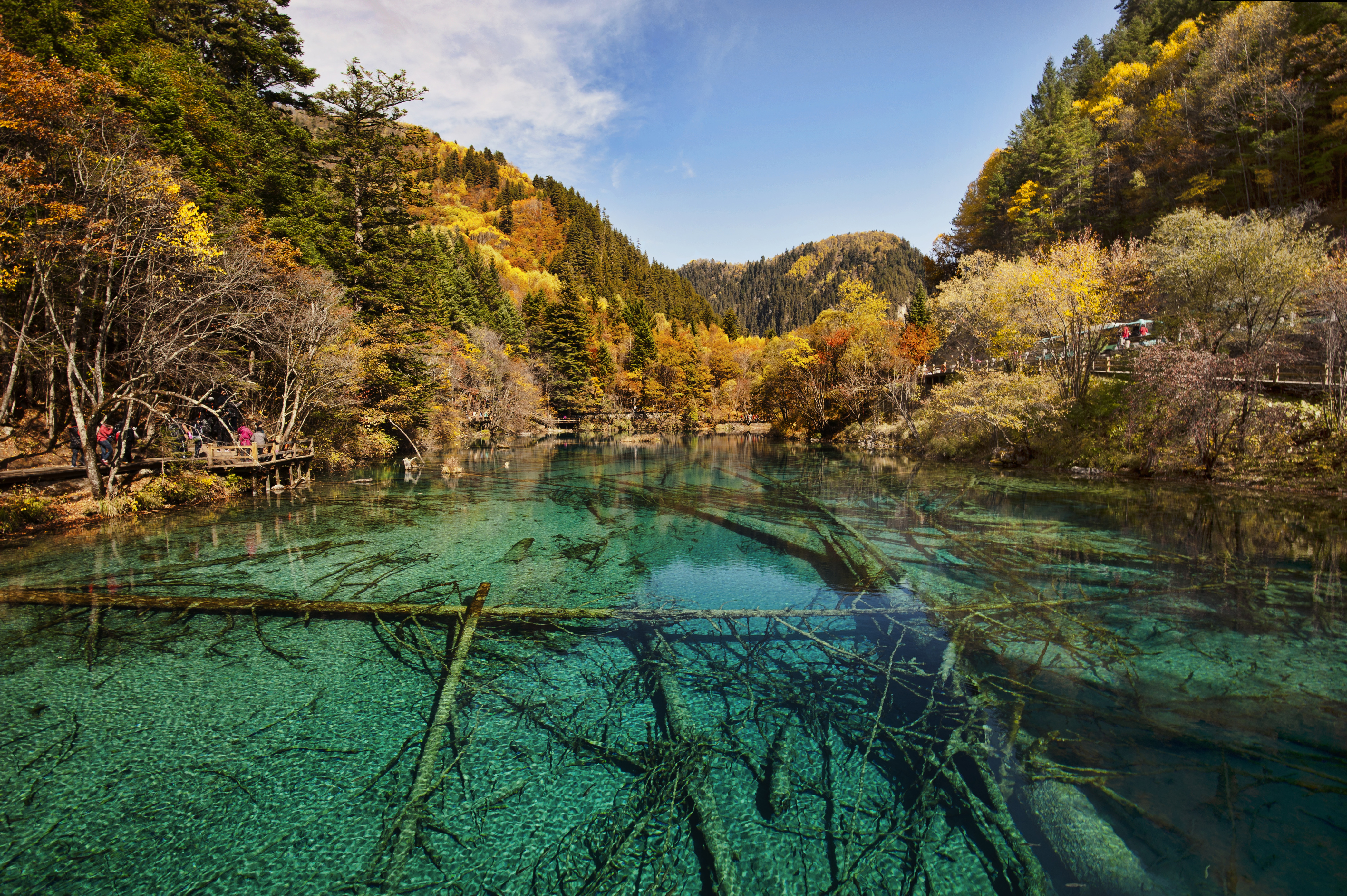
How was Jiuzhaigou Formed?
Nestled in the heart of Sichuan Province, China, Jiuzhaigou Valley is a mesmerizing realm of crystal-clear lakes, cascading waterfalls, and vibrant forests. Recognized as a UNESCO World Heritage site, its ethereal beauty captivates millions of visitors annually. But have you ever wondered how this natural wonderland came to be? The answer lies in a fascinating interplay of geological forces and time.
Formation of Jiuzhaigou Valley
In the highlands of Eastern China, the protected area spans a wide range of elevations from 6,500 to 14,500 feet above sea level, causing the rushing water to flow between the placid lakes. This incredible landscape was formed over thousands of years by earthquakes and carbonate rocks.
The Role of Tectonic Activity
Jiuzhaigou sits within a geologically active region shaped by the powerful forces of plate tectonics. Millions of years ago, the Indian subcontinent collided with the Eurasian plate, creating the Tibetan Plateau and the Himalayan mountain range. This ongoing collision continues to push the plateau upwards, resulting in frequent seismic activity in the region.
| Geological Era | Tectonic Event | Impact on Jiuzhaigou |
|---|---|---|
| Millions of years ago | Collision of Indian and Eurasian Plates | Formation of Tibetan Plateau and uplift of Jiuzhaigou region |
| Thousands of years ago | Earthquakes along fault lines | Formation of valleys, lakes, and waterfalls |
The earthquakes fractured the landscape, creating valleys and depressions. Over time, these depressions filled with glacial meltwater, forming the numerous lakes that characterize Jiuzhaigou.
The Significance of Carbonate Rocks
The underlying geology of Jiuzhaigou played a crucial role in shaping its unique landscape. The region is primarily composed of carbonate rocks like limestone and dolomite, which are highly susceptible to dissolution by acidic rainwater.
Over millennia, rainwater mixed with carbon dioxide from the atmosphere, creating a weak carbonic acid solution. This acidic water gradually dissolved the carbonate rocks, widening the valleys and carving intricate channels within the landscape.
This process, known as karst dissolution, contributed to the formation of:
- Travertine dams: Dissolved calcium carbonate in the water precipitated out, forming natural dams that further segmented the lakes and created the iconic cascading waterfalls.
- Unique lake colors: The dissolved minerals, along with suspended glacial silt and algae, give the lakes their mesmerizing turquoise, blue, and green hues, varying with depth, light, and mineral content.
Glacial Influence
During the last glacial period, glaciers carved through the region, further deepening the valleys and depositing sediment. As the glaciers retreated, they left behind moraines, which acted as natural dams, contributing to the formation of some of the lakes.
FAQs
**What is the best time to visit Jiuzhaigou?**
Autumn (September-October) is the most popular time to visit Jiuzhaigou, as the foliage turns into a vibrant tapestry of reds, oranges, and yellows, enhancing the already stunning scenery. However, each season offers a unique perspective of the park's beauty.
**How long do I need to fully experience Jiuzhaigou?**
To appreciate the grandeur of Jiuzhaigou, it's recommended to allocate at least two full days. This allows ample time to explore the main valleys, hike to scenic viewpoints, and soak in the tranquility of this natural wonder.
**What are some of the must-see attractions in Jiuzhaigou?**
Some of the most iconic attractions include the multi-tiered Nuorilang Waterfall, the serene Five Flower Lake with its submerged tree trunks, and the expansive Long Lake, the largest and deepest in Jiuzhaigou.